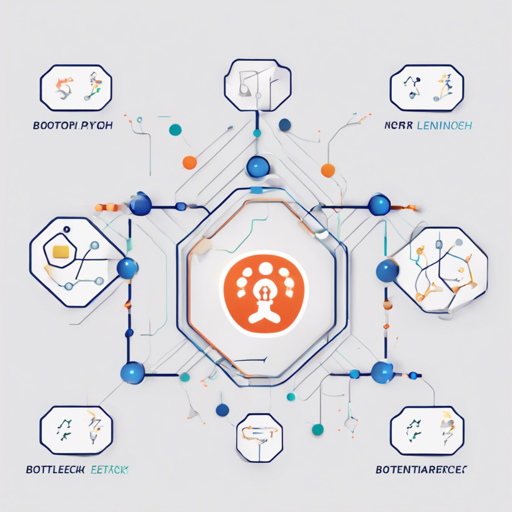The Bottleneck Transformer is a state-of-the-art visual recognition model that ingeniously combines convolutional and attention mechanisms. This model has been shown to outperform EfficientNet and DeiT in terms of performance-compute trade-off. In this article, we will guide you on how to implement the Bottleneck Transformer using PyTorch, and we will provide troubleshooting tips along the way.
Installation
Before you can run the Bottleneck Transformer, you need to install the necessary package. Simply run the following command:
bash
$ pip install bottleneck-transformer-pytorch
Usage
Once you have the package installed, you can start using the Bottleneck Transformer in your projects. Below is an example of how to implement the BottleStack layer:
python
import torch
from torch import nn
from bottleneck_transformer_pytorch import BottleStack
# Initializing the BottleStack layer
layer = BottleStack(
dim = 256, # channels in
fmap_size = 64, # feature map size
dim_out = 2048, # channels out
proj_factor = 4, # projection factor
downsample = True, # downsample on first layer or not
heads = 4, # number of heads
dim_head = 128, # dimension per head, defaults to 128
rel_pos_emb = False, # use relative positional embedding - uses absolute if False
activation = nn.ReLU() # activation throughout the network
)
# Creating a random feature map
fmap = torch.randn(2, 256, 64, 64) # feature map from previous resnet block(s)
output = layer(fmap) # (2, 2048, 32, 32)
Breaking it Down: The BottleStack Analogy
Imagine building a multi-tiered cake where each tier represents a different layer of the BottleStack. The dim parameter specifies the number of layers of frosting (channels), while the fmap_size indicates the cake’s diameter (feature map size). The dim_out represents the ultimate frosting decorations (channels out) you want to impress your guests with, and the proj_factor is akin to how thick you want each layer of frosting to be. Each layer is intricately designed to merge beautifully with one another, providing a rich culinary (or computational) experience!
Building Your Own BotNet
You can also create the BotNet by modifying a pre-existing ResNet model. Here’s how:
python
import torch
from torch import nn
from torchvision.models import resnet50
from bottleneck_transformer_pytorch import BottleStack
layer = BottleStack(
dim = 256,
fmap_size = 56, # set specifically for imagenets 224 x 224
dim_out = 2048,
proj_factor = 4,
downsample = True,
heads = 4,
dim_head = 128,
rel_pos_emb = True,
activation = nn.ReLU()
)
# Load pre-trained ResNet50
resnet = resnet50()
# model surgery
backbone = list(resnet.children())
model = nn.Sequential(
*backbone[:5], # Use the first 5 layers of the ResNet
layer,
nn.AdaptiveAvgPool2d((1, 1)),
nn.Flatten(1),
nn.Linear(2048, 1000)
)
# Use the BotNet
img = torch.randn(2, 3, 224, 224) # Random input image
preds = model(img) # (2, 1000)
Troubleshooting Tips
If you encounter any issues while implementing the Bottleneck Transformer, consider the following troubleshooting steps:
- Ensure that all required packages are installed. If there is an import error, you may have missed installing a package.
- Check the input dimensions; they must match the model’s expected shape to avoid runtime errors.
- If you receive an out-of-memory error, try reducing the batch size or model complexity.
- Refer to the model specifications to ensure correct values for parameters like dim_head and proj_factor.
For more insights, updates, or to collaborate on AI development projects, stay connected with fxis.ai.
Conclusion
Implementing a Bottleneck Transformer model can significantly enhance your visual recognition tasks. Don’t hesitate to experiment with different parameters to optimize performance. At fxis.ai, we believe that such advancements are crucial for the future of AI, as they enable more comprehensive and effective solutions. Our team is continually exploring new methodologies to push the envelope in artificial intelligence, ensuring that our clients benefit from the latest technological innovations.

